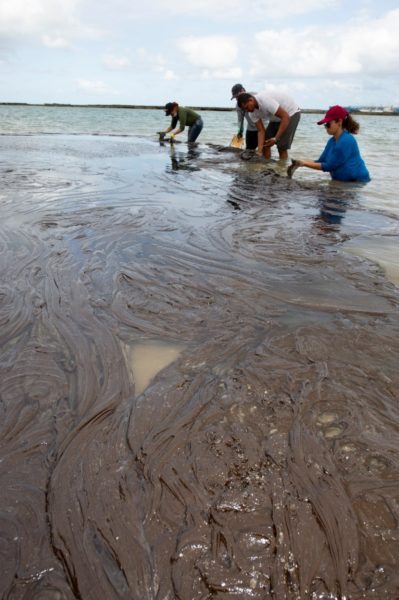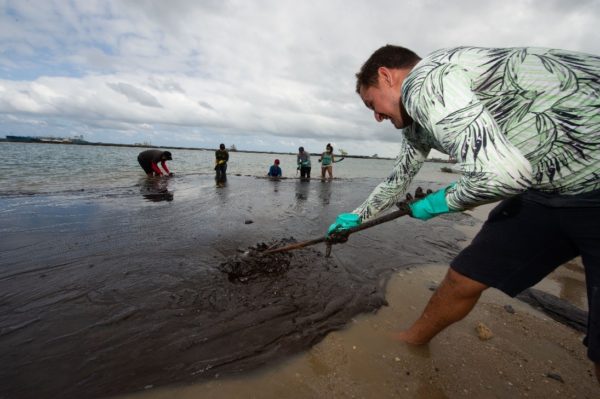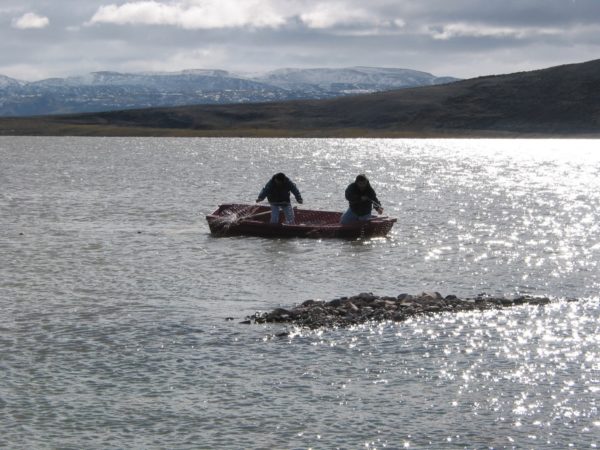What Canada can learn from the devastating oil spill in Brazil
Oil spill creates social and environmental crisis in coastal communities
By Elissama Menezes and Mark Brooks
On August 30, reports emerged of oil washing up on the northeast coast of Brazil. This may be news to most Canadians, and though the total spill amount remains unknown, over 4,400 tonnes of oil have been collected, and 466 towns affected.
There’s a lesson in this disaster for Canada.

The oil slick has spread across beaches and mangroves and has already reached marine protected areas such as Abrolhos National Park, the most biodiverse region in the South Atlantic, a nursery for species such as the humpback whale and endemic corals, and extremely sensitive to the toxic material that has been contaminating the beaches. All over the coast, there are reports of marine animals killed by oil contamination. The entire marine ecosystem has been affected, including fish, turtles, whales, crustaceans, corals, birds and aquatic mammals.
According to WWF-Brazil, the tragedy is on a grand scale in terms of both its extent — more than 2,500 kilometres of coast are affected — and its impacts on the economy and the livelihoods of people dependent on marine natural resources.
Response time for an aggravated oil disaster
The oil is linked to a Greek-flagged ship carrying Venezuelan crude — it was previously detained in the United States due to improper dumping of the oil mixture in the sea. The Brazilian government has been slow to act and has not implemented the National Oil Incident Contingency Plan effectively. The Environment Minister made his first mention of the case more than a month after the first reports of oil slicks, at which point the sludge had been spreading for almost 40 days before the government began investigating the cause of the tragedy.
While the efforts of the coastal communities in organizing and leading extensive clean-ups on Brazilian beaches have been remarkable, the extent of this disaster requires a timely response by the Brazilian government — oil must be contained, and material must be removed immediately and safely.

Oil spills and coastal communities
More than 9,000 kilometres and a vastly different ecosystem separate the Arctic from the area affected by the Brazilian oil spill, yet there are some important lessons we can learn from this devastating environmental and social catastrophe. The Canadian government has placed a ban on oil and gas activities in Canada’s Arctic Ocean, but it may be lifted in 2021. If oil and gas activities are permitted, how would Canada respond to a similar incident?
The Brazilian spill occurred in a populated region with much milder temperatures. Spill response equipment was available, yet the spill continues to cause a tremendous amount of damage to the marine environment. The response capacity is much lower in the Canadian Arctic where the environmental conditions are much harsher. The extreme cold, sea ice and lack of daylight during certain times of the year would compound the difficulty of spill response, and cold Arctic seas would slow down the oil-digesting bacteria, which are able to “chew” on oil and are crucial in reducing the immediate impact of a spill.
Knowledge of how to best respond to oil spills in extreme Arctic conditions is inadequate, and no method has yet been proven effective and reliable for cleaning up oil spills in ice. The Nunavut Impact Review Board concluded in their report on the potential for oil and gas development in Baffin Bay and Davis Strait that there is “an overall lack of regulatory, industry and infrastructure readiness in Nunavut.” The Board expects that it will take at least a decade to complete the research, planning and consultation required.
Many Inuit communities are heavily dependent on a healthy marine environment for subsistence, as well as their social, spiritual and cultural well-being, and the Arctic has sensitive and unique ecosystems that are extremely vulnerable to disturbance.

There are critical data and research gaps that are unlikely to be filled by 2021. Before any oil and gas activities take place, the government must first ensure that drilling can be conducted safely with the lowest possible risk to the sensitive Arctic environment and that, if a spill does occur, it can be cleaned up effectively and rapidly. As well, mobilization, response and action plans need to be in place for all Arctic communities. Community members can often find themselves on the front lines of a spill as first responders. Resources, equipment and training need to be put in place and updated and practiced regularly.
As a recent poll illustrated, a large majority of Canadians want to see the Arctic moratorium extended until 2026 and, almost unanimously, they want to see oil and gas activities meet the highest possible standards for safety and environmental protection. If a major spill or well blowout occurs, it would seriously imperil the surrounding marine environment, potentially destroying habitat for polar bears, seals, walrus, sea birds, belugas, narwhals and bowhead whales alongside having devastating consequences for local communities.
Canadians do not want a disaster like the one currently unfolding in Brazil to happen in the sensitive, remote and extreme conditions of the Arctic offshore.

